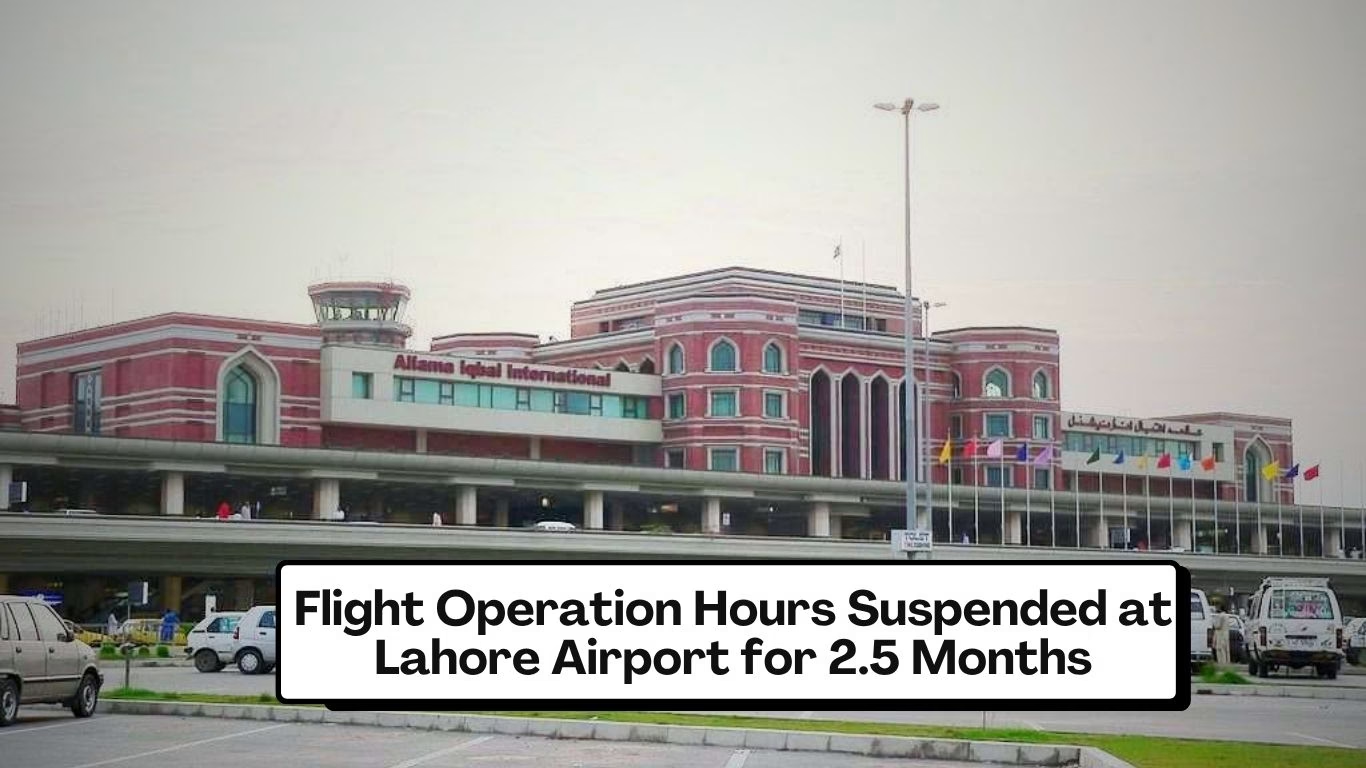History
In the middle of the 20th century, Japan had significant effects from several events related to its infrastructure and foreign affairs. One of them was the establishment of Haneda Airport, which is regarded as a breakthrough in Japanese air travel.
The Haneda Airport Terminal became functional in May 1955. The First flight of the domestically made YS-11 aircraft took place in August 1962. The following year, Haneda’s International Terminal area was inaugurated and became operational after the enlargement and restoration in 1963 and Japanese citizens were allowed to travel abroad. In 1964, the Haneda line, also known as Metropolitan Motorway 1, was built to provide a speedy route to the airport. In September 1964, the Tokyo Monorail between Hamamatsucho and Haneda Airport and the Haneda Domestic Arrival area both went into service.
airside and landside facilities at Haneda
The brand-new international arrival area at Haneda Airport was inaugurated in June 1970. The majority of foreign airlines operating out of Haneda Airport (apart from China Airlines) went to Narita International Airport once it opened in May 1978. The Haneda Airport’s domestic flight diversion development was finished in July of the same year. The renovation of the Haneda Airport Terminal was finished in April 1988, and the New Runway A at the airport was inaugurated in July of the same year.
Passenger Terminal 1 of Haneda Airport began its operation in September 1993. New Runway C opened for business in March 1997. The boarding station and Temporary International Passenger Terminal were both inaugurated in 1997 and 1998, respectively. New Runway B at Haneda Airport started operating in March 2000, and in February 2001, a free shuttle service between Terminal 1 and the temporary international passenger terminal was made available. The temporary international passenger terminal at Haneda Airport underwent refurbishment and extension work that was finished in May 2002. The airport concierge was put into service in August 2003. Terminal 2 was inaugurated in December 2004 and South Pier at Haneda Airport Terminal 2 was inaugurated. P4’s straightforward multistory parking facility debuted in December 2007, and work on it subsequently began in 2009.
The Haneda Airport International Passenger Terminal 2 underwent development from 2017 to 2020, involving the extension and modernization of current facilities. The project’s objectives were to boost the airport’s capacity to accommodate more passengers and enhance the overall traveler experience.
Airport Ownership Model
The airport legislation has divided Japanese airports into three categories: the first category requires international routes, the second category calls for domestic routes, and the third category demands for regional domestic routes.
The vast majority of airports in Japan belong to the Ministry of Land, Transport, Infrastructure and Tourism. Moreover, the Japan Meteorological Agency offers aviation weather services and the Civil Aviation Bureau provides air navigation services.
The corporate management model is used at airports in the first category. In this approach, the airports are publicly owned but are run and managed by private companies.
Tokyo-Haneda International Airport has remained MLIT-owned. The airport’s airside has been run by the MLIT, while the landside is under the control of profit businesses. Haneda Airport is run and managed by a government-owned organization (TIAT)- Tokyo International Air Terminal Corporation. It is in charge of a number of duties, including commercial operations, maintenance, safety, and security.
Airport Organizational structure
The Organizational structure Tokyo Haneda Airport consists of the following:
- Board of Directors: Top decision-making body, is in charge of establishing the organization’s management policies and supervising all aspects of its business operations. There are nine people that make up the group, including the chairman, president, and outside directors.
- Audit & Supervisory Board: The auditing and oversight of Haneda’s operations and financial management are under the purview of the Audit & Supervisory Board. Four people make up the group, including two external auditors.
- Nomination Advisory Committee: Its duties include creating job descriptions and selection criteria, locating and assessing possible candidates, and giving advice and suggestions to the board of directors in order to help them choose the executive members.
- Remuneration Advisory Committee: It makes it easier to create executive compensation rules and standards, evaluate executive officer performance, and suggest executive officer remuneration based on the established policies and criteria.
- Compliance Promotion Committee: It is liable for promoting and guaranteeing adherence to rules and laws, keeping track of and evaluating compliance concerns, conducting educational and training initiatives to raise awareness, investigating violations of compliance, taking corrective action where necessary, and reporting to the board of directors and other stakeholders on compliance-related actions and results.
- Executive committee: The Executive Officers are responsible for implementing out the management policies of the airport and managing day-to-day operations. They are answerable to the President and are selected by the Board of Directors.
- General Managers: The Airport Operations Department, the Facilities Department, the Business Development Department, and the Finance Department are just a few of the departments that the General Managers are in charge of administering and overseeing the operation.
- Officers and Employees: Officers and staff at Tokyo-Haneda Airport are in charge of running business operations and rendering excellent services to clients and stakeholders.
Summary of Income Sources and Expenditure
Income Sources of Domestic Terminal:
- Facilities Management
- Overseeing the establishment and administration of passenger terminals.
- Leasing out real estate to airlines and airport concessionaires, such as offices and retail.
- Giving passengers services.
- Maintaining and operating parking lots.
- Merchandise Sales
- Retail of good
- Food and Beverage operations
- Offering direct operation of food services.
- Producing and selling meals for flights.
International Terminal:
- Facilities Management
- Maintaining the building, running the duty-free shops and other passenger services in accordance with the Tokyo International Air Terminal Corporation’s (TIAT) commission.
- Merchandise Sales
- (Retail) Selling products directly to customers.
- selling merchandise in bulk to merchants or other companies (wholesale)
- Food and Beverage
- Operating a restaurant.
- Producing and distributing prepared foods and packaged meals
Post-COVID-19 pandemic issues
To provide a contact-free environment and manage the post-pandemic scenario, Tokyo Haneda Airport administration has perhaps undertaken the following modifications and improvements:
- To handle the flood of travelers and make sure that social segregation policies are implemented, Tokyo Haneda Airport increased the number of workers and security officials.
- In order to respond to shifting demand and travel limitations, Tokyo Haneda Airport worked with airlines to change flight schedules and itineraries.
- The airport management collaborated closely with regional and federal authorities to follow rules and recommendations regarding travel and the pandemic, making sure that all required safety and health measures were taken to safeguard both personnel and passengers.
- In order to reduce the necessity for direct physical interaction with the technology, the airport improved its automated check-in system at Terminal 1 for domestic flights to enable passengers to have their fingerprints scanned using infrared rays.
- Automatic baggage registration technology now has a zero-contact solution, so there’s no need for customers to wait in queue at check-in desks to tell personnel what’s in their bags.
- The addition of ticket gates at the entry enhanced the security check location. The gates open, receipts are given out, and boarding permits are placed over the scanners. After passing through security, passengers can also use motorized wheelchairs to go to the boarding gate.
- The airport’s new lavatory doors include unique knobs that may be opened with an arm or elbow instead of a hand, enhancing cleanliness and limiting the transmission of germs.
- Installed thermal imaging cameras and other temperature screening systems to identify individuals with a fever.
- In order to improve the air quality within the airport and stop the spread of airborne particles, Tokyo Haneda Airport improved its ventilation and air filtering systems.
Long-term future
In Japan, air passenger traffic increased by a total of 139% in 2021. Due to fewer border controls, passenger travel has increased. It is believed that the increase in passenger traffic would help Japan’s commercial aviation sector to rebound. To capitalize on its position as one of Japan’s main gateways, Haneda Airport is introducing new facilities this to assist strengthen its operations and increase its footprint as a business hub. This includes adding additional hotels and improving traffic flow at the airport.
Since the Haneda airport relocated its runways and buildings through offshore expansion, which made certain lands available for future development projects, new facilities have already cropped up around Haneda in recent years. The usage of the property around the airport is often restricted to companies with ties to the airport. However, one of the sites was permitted to be developed under the condition that the government-owned one would be utilized to improve the services of the airport, which resulted in the construction of Haneda Airport Garden.
Defense Spender
At the beginning of 2021, the Japanese Defense Ministry requested a budget for fiscal 2022 of more than USD 49.3 billion, which is a record and may go beyond the traditional ceiling of 1% of GDP. Japan may surpass China and the United States as the third-largest defense spender in the world by 2027.
Aircraft Movements
Future growth in aircraft movements at Tokyo Haneda Airport is predicted. For instance, the government of Japan has set goals for bringing in 40 million foreign visitors by 2020 and 60 million by 2030, which is projected to increase demand for flights to and from Tokyo. However, there are also certain circumstances that can result in fewer aircraft movements at the airport. Tokyo Haneda’s market share, for instance, may be impacted by rising rivalry from nearby airports like Narita International Airport.
Increase Catchment Area
The opening of a new railway line named the “Linear Chuo Shinkansen,” which is anticipated to be finished by the middle of the 2030s, might have an impact on the catchment area of Tokyo Haneda Airport. Tokyo will now be connected to Nagoya and Osaka by a new railway route, cutting the distance between the two cities’ journey times to just 40 minutes. By making it easier for travelers from the Nagoya region to use Tokyo Haneda Airport, this may expand its catchment area.
To encourage economic growth and draw in more foreign investment, the Japanese government has also designated the Greater Tokyo area as a “National Strategic Special Zone.” This project may boost regional economic activity, which might in turn raise demand for flights to and from Tokyo Haneda Airport.
SWOT analysis of Haneda Tokyo Airport
A SWOT analysis is a commonly used organization planning method that focuses on matching internal strengths and weakness with external environmental opportunities and treats of the organization.
Strengths
- Strategic Location: Tokyo has 2 main international airports. Haneda is closer to central Tokyo than Narita, ensuring convenient travel for passengers to and from the city.
- Low fare transport: Public Transportation options that are available to reach the airport or the central city is cheaper than Narita airport.
- Efficient operations: Haneda airport is known for its efficient operations, with quick check-in and security clearance, and fast baggage handling.
- Strong Connectivity: Haneda airport offers a wide range of domestic and international flights, connecting Tokyo to major cities around the world.
- Modern Infrastructure: The airport has modern facilities, including lounges, shops, and restaurants, providing a comfortable experience for passengers (Haneda Airport, 2021).
Weaknesses
- Limited Capacity: Haneda airport has limited runway and terminal capacity, which limits its ability to handle more flights and passengers (Hikari, 2019). Furthermore, due to its small infrastructure as compared to Narita, most people have perception that the Haneda Airport is suitable for domestic flights and Narita airport for international flights.
- Congestion: It is considered one of the busiest airports in the world therefore Haneda experiences congestion during peak hours, leading to delays and longer waiting times for passengers (Haneda Airport, 2021).
- High Costs: The costs of using Haneda airport can be high compared to other airports in the region, which may discourage airlines and passengers from using the airport (Hikari, 2019).
Opportunities
- Expansion: The airport has plans for expansion, including the construction of a third runway, which will increase its capacity and enable it to handle more flights and passengers (Haneda Airport, 2021).
- Increased demand: Tokyo’s increasing popularity as a tourist destination, and the growing business ties with other countries, may increase the demand for air travel, presenting an opportunity for Haneda airport to increase its traffic (JNTO, 2021).
- Improved Customer Experience: The airport can invest in improving customer experience through technology and other amenities, attracting more passengers (Avinor, 2021).
Threats
- Competition: Haneda airport faces competition from other airports in the region, such as Narita airport, which may offer lower costs or more flight options (Hikari, 2019). Moreover, even though Haneda Airport is closer to central Tokyo but Narita International Airport has many fast transports means like Jr Narita Express, Buses, Taxis, Keisei Skyliner even helicopters that make the distance very short. For example, Skyliner train only take 36 minutes to reach Nippori Station.
- Economic Volatility: Economic instability or natural disasters may affect travel demand and reduce passenger traffic (JNTO, 2021).
- Security Concerns: Security concerns, including terrorism or natural disasters, can adversely affect air travel and the overall aviation industry, including Haneda airport (Avinor, 2021).
Recommendation
- Apply Sustainable Practices: The flight terminal can embrace lasting practices in all its procedures, consisting of building and construction, power management, and waste reduction, to accomplish the CO2 reduction target of 46%. This will certainly not only advertise sustainability however also boost the airport terminal’s track record as an ecologically accountable organization.
- Embrace Digital Makeover: The airport can leverage electronic innovations such as automation, artificial intelligence, as well as huge data analytics to improve effectiveness as well as performance. This will certainly make it possible for the airport terminal to manage operations via DX and also systemization, hence lowering costs as well as boosting the passenger experience.
- Foster Cooperation: The airport terminal can team up with airlines, federal government companies, and various other stakeholders to establish new methods to use terminals, improve vacationer fulfillment, and advertise sustainable practices.
- Increase Facilities: The airport can increase its infrastructure by completing the expansion of Terminal 1 and Terminal 2. This will make it possible for the flight terminal to accommodate a future surge in airline company demand, boost its functional performance, and also boost guest experience.
- Create a Diverse Workforce: The airport can grow a company culture that encourages individuals to believe on their own and take calculated dangers, and where participants of the varied labor force motivate each other.
- Enhance Administration: The airport terminal can develop administration that understands greater transparency and also equitability of management, as well as enhance company worth.
Suggestions
The Haneda international Flight terminal is currently possessed and operated by Japanese government and the Japan civil aeronautics bureau. If the Japan privates the Haneda Airport terminal after that the possibilities of looking for the innovation as well as immediate growth would likely to be seen. Ultimately, the decision to privatize a flight terminal is complex and relies on a selection of variables, including political, financial, as well as social factors to consider. Haneda Airport, it is presently had as well as operated by the Japanese federal government, and its performance standing would certainly need to be evaluated thoroughly prior to any kind of choice to privatize it is made.
The pandemic has demonstrated the dangers related to relying greatly on one source of profits, such as traveler website traffic. To mitigate this danger, Haneda Airport terminal might check out diversifying its income streams by expanding right into locations such as retail, advertising, and property. It is also vital for Haneda Airport terminal to improve its monetary preparation procedures. This includes routinely evaluating monetary risks, developing contingency plans, as well as regularly keeping an eye on financial efficiency.
Improving operational performance is critical for Haneda Airport to remain affordable as well as rewarding. This might include improving processes, adopting brand-new modern technologies, and investing in facilities improvements. Structure strong connections with essential stakeholders, consisting of airline companies, regulative bodies, as well as the neighborhood neighborhood, is important for the long-lasting success of the flight terminal. This includes maintaining open lines of communication as well as attending to stakeholder concerns in a prompt and efficient way. By carrying out these lessons, Haneda Airport can enhance its strength and also guarantee its lasting success in a swiftly transforming market.
Conclusion
In conclusion, Haneda Airport has been gradually broadening its infrastructure, implementing lasting techniques, and improving operational performance to satisfy the increasing demand for flight in Japan. With a concentrate on digital transformation, cooperation, and a varied labor force, the airport intends to keep its setting as one of the busiest as well as most effective airport terminals on the planet. Its efforts in the direction of attaining sustainability as well as improving the passenger experience have actually made it a leading instance in the air travel industry.






Leave a Reply